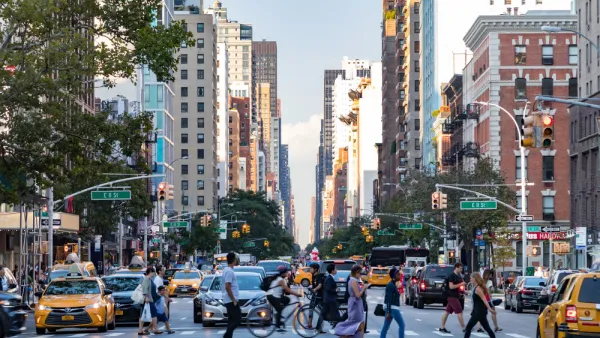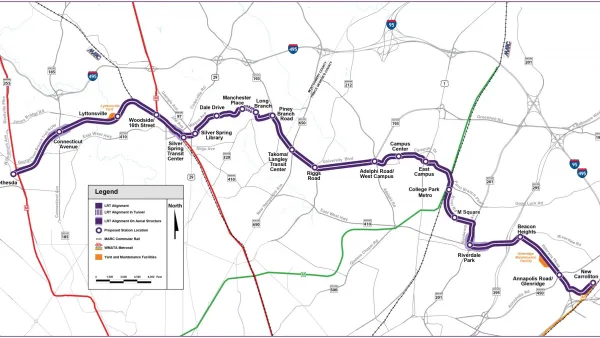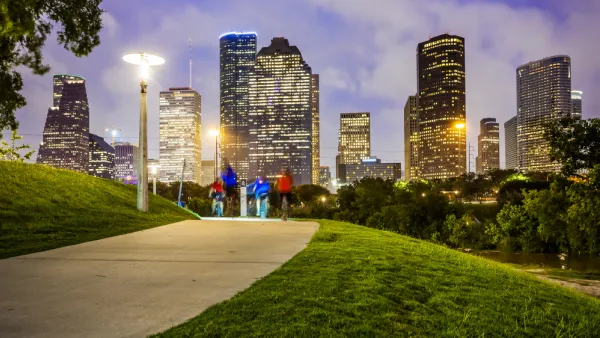As the real estate market comes back to life, walkable urbanism is poised to become the dominant mode of development across America. Emily Badger explains why Washington D.C.'s land use evolution portends the future of cities everywhere.
Once seen as a niche real estate market, walkable urbanism is poised to become the real estate market in America. So says George Washington University professor Christopher Leinberger, who will present his research on the growth of walkable urbanist development in Washington D.C. at a ULI conference on the topic next week. For Leinberger, the trends he's observed in Washington, which "now leads the nation with 43 distinct neighborhoods [he] has identified as 'regionally significant walkable urban places,'" will be coming soon to cities everywhere.
"Less than 10 percent of the entire metropolitan land mass is where
development wants to go over the next generation," Leinberger says. "We
don't need to add another square foot – or, in the case of sprawl,
another square mile – of land to the metropolitan area. We've already
urbanized as much as we need to."
"It helps his argument that he's talking in market trends and not moral
imperatives," writes Badger. "Much of the conversation around 'walkable urbanism' sounds
almost paternalistic to suburban ears, as if everyone should and must
decamp to high-rise condos above a Whole Foods."
"He isn't advocating that suburbanites move downtown. If he's imploring
anyone to action, it's the builders and real estate developers who don't
seem to have picked up on shifting market demand yet, and the
policymakers who have the power to clear obstacles to this kind of
development (for starters, by promoting multi-modal transportation and
mixed land use)."
FULL STORY: The Next Major Real Estate Cycle: Walkable Urbanism?

National Parks Layoffs Will Cause Communities to Lose Billions
Thousands of essential park workers were laid off this week, just before the busy spring break season.

Retro-silient?: America’s First “Eco-burb,” The Woodlands Turns 50
A master-planned community north of Houston offers lessons on green infrastructure and resilient design, but falls short of its founder’s lofty affordability and walkability goals.

Delivering for America Plan Will Downgrade Mail Service in at Least 49.5 Percent of Zip Codes
Republican and Democrat lawmakers criticize the plan for its disproportionate negative impact on rural communities.

Test News Post 1
This is a summary

Test News Headline 46
Test for the image on the front page.

Balancing Bombs and Butterflies: How the National Guard Protects a Rare Species
The National Guard at Fort Indiantown Gap uses GIS technology and land management strategies to balance military training with conservation efforts, ensuring the survival of the rare eastern regal fritillary butterfly.
Urban Design for Planners 1: Software Tools
This six-course series explores essential urban design concepts using open source software and equips planners with the tools they need to participate fully in the urban design process.
Planning for Universal Design
Learn the tools for implementing Universal Design in planning regulations.
EMC Planning Group, Inc.
Planetizen
Planetizen
Mpact (formerly Rail~Volution)
Great Falls Development Authority, Inc.
HUDs Office of Policy Development and Research
NYU Wagner Graduate School of Public Service





























